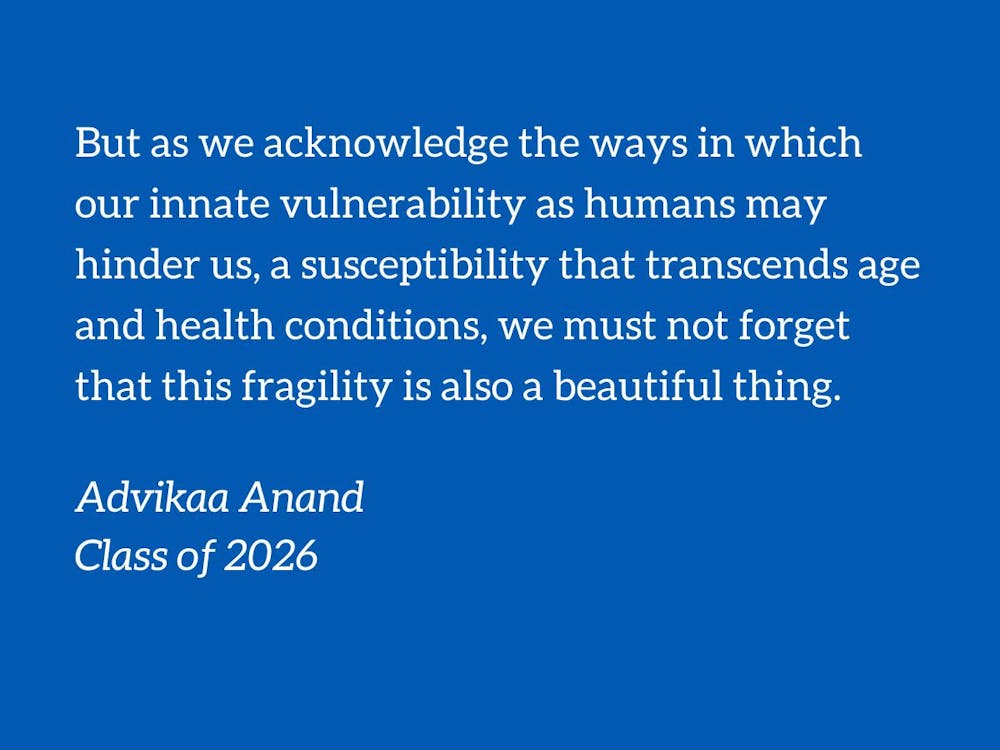I remember the first time that I saw a friend’s arm in a cast. The tips of her finger were wrapped up in neon pink plaster, its bright color distracting me from the multiplication problems in front of me. During our break, all our classmates flocked to sign her cast, and so did I. I pressed the tip of the sharpie to the plaster’s rough surface, searching for a small space to write something when someone else’s message caught my eye, “You’re so cool!”
I decided that I concurred with the sentiment. After all, my friend’s cast was a testament to an adventure, a breathing relic of the daring spirit that propelled her to score the winning goal in her soccer game, albeit at the cost of her ulna. So the next time I tumbled down the stairs, admittedly as a result of my clumsiness rather than daredevilry, I wasted no time sobbing over the aching pain piercing my knee. Instead, I marched through my front door with pride, brandishing my injury to my parents, “Look what I got at school today.”
I am not sure when I crossed that grand precipice of wounds and injuries ceasing to serve as emblems of thrill and excitement and instead, causes of fear and worry. I look back to my childish naivete of thinking all physical consequences of my adventures were irrelevant if I had a good story to tell, and I am shocked at my obliviousness.
I don’t think we fully comprehend the gravity of only getting one body with which we are to live our entire lives until we are far too old or far too sick. When we are young, we think that we are invincible and so we hurl our bodies into situations of peril without regard for the repercussions. I can think of far too many instances when I have neglected eating on time or forced myself to carry through a school day even while not feeling well.
What is far worse is that we scorn fragility. When our peers are not able to maintain the same physical pace as us, we laugh at them and deride them. I remember a conversation a few years ago with a few friends, and our discussion of asthma when we saw that someone had accidentally dropped their inhaler in the hallway.
“What a wuss has asthma at nineteen,” he cackled as we walked past him. The lack of compassion in his words pierced me like a blade through my ribs.
I know he was kidding, but the sheer ignorance of his words has stayed with me. After all, we cannot spend all our lives sustaining the same vigor we boasted in our youth. To assume that we are immune to the ebbs and flows of life that might render us vulnerable to debilitating illness in the future or even in the present is more than foolish.
It is insensitive. And it is myopic. Yet, it is also a hallmark of youth and one for which we cannot entirely fault ourselves. Psychological studies have repeatedly shown that teenagers “simply do not believe that anything truly bad will ever happen to them.” These feelings of “immortality” have their origins in the delayed chemical evolution of our brains: “The reason the frontal lobes are not fully engaged is because they have not yet completed the process of neuronal myelination.” This myelination is essential to providing the insulation that enables electrical signals to reach their neuronal destinations.
Although much of this false sense of invincibility is biochemical in nature, not every teenager gets to enjoy it. Some adolescents are forced to reckon with the fragility of their bodies and shed their neuronal inclinations towards invincibility, as they contend with health conditions that impair their ability to eat, walk, and breathe in the same way as their counterparts. What they learn in months takes others decades: we cannot take the proper functioning of our health for granted.
And if the COVID-19 pandemic has taught us any lessons, it’s that our bodies are not impervious, and neither is our collective health. None of us exist in a vacuum — the decisions we make have important reverberations for the well-being of others. It takes a second — one accident — for the physical plights we view as distant threats to become our present predicaments.
But as we acknowledge the ways in which our innate vulnerability as humans may hinder us, a susceptibility that transcends age and health conditions, we must not forget that this fragility is also a beautiful thing. That we are not immortal at any age means we are also afforded the privilege of feeling deeply throughout our lifetimes — so just as we may struggle with our bodies as much at five as at sixty-five, we may also love and feel with the same intensity.
We only live once.
But we only live once. And when it’s over, it’s forever.
Advikaa Anand is a Trinity junior. Her pieces typically run on alternate Wednesdays.
Get The Chronicle straight to your inbox
Sign up for our weekly newsletter. Cancel at any time.
Advikaa Anand is a Trinity sophomore and an opinion managing editor of The Chronicle's 119th volume.

